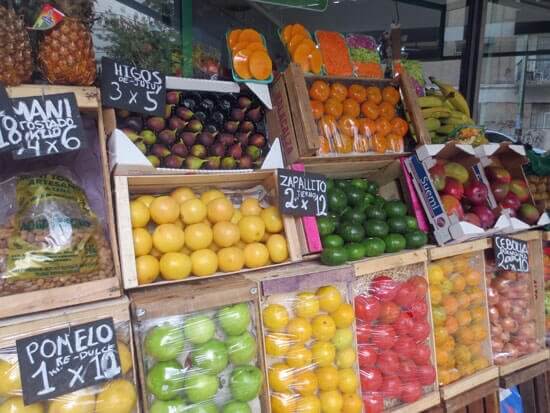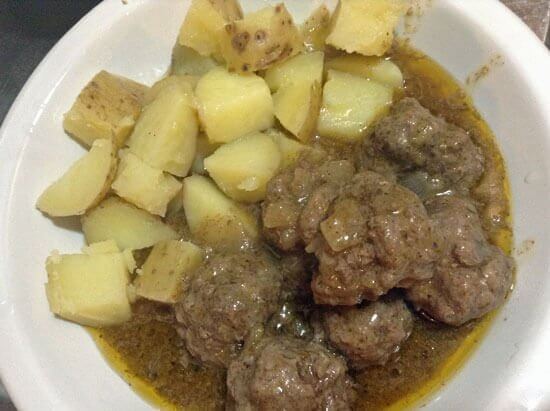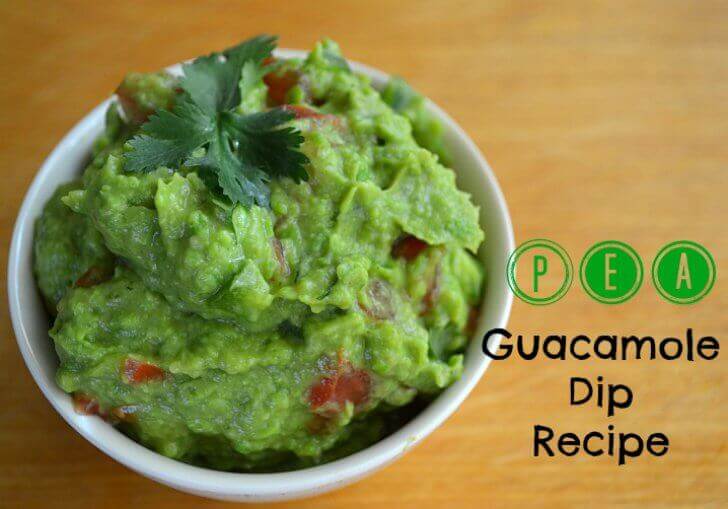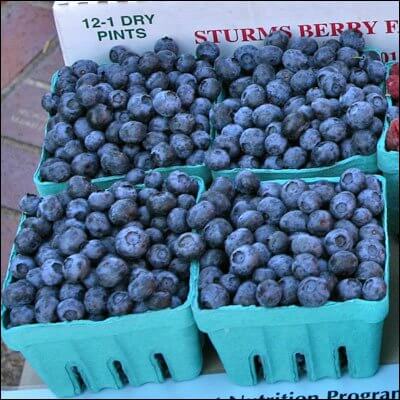Serving My Family Real Food in Imperfect Situations Part 2 (With a 4-day Meal Plan)

Did you miss the first part of this post? You can read it here.
Now that you know what we’ve been buying are you curious what I’ve made with those foods, in sub-par kitchens at that?
I tracked our actual meals and snacks for four days, to give you a genuine example of how we’re eating as we travel.
A real look at what we ate for 4 days
Monday
Breakfast– Eggs, baguette, fruit (apples, pears, plums), and whole milk
Small lunch– Fresh fruit and yogurt.
Afternoon snacks during a penguin colony tour– Homemade trail mix (raisins, dried apricots, sunflower seeds, almonds), hard boiled eggs, apples, water, shared small piece of cake at a café (well, not me- I took a teensy lick of the fruit topping), sandwich meat, cheese slices, olives, cold boiled potato pieces for baby.
(We’re not as big of snackers as we sound like! It was a looong, but extremely amazing 6 hour tour that went past dinner time, so plenty of food for hungry children and a nursing mama was a must.)
Quick and easy dinner late that night– Hotdogs in baguette (a total compromise, but the whole tour was as exhausting as it was fantastic, and my kids spied hotdogs while we bought milk at a corner store and in a moment of weakness, I succumbed to their request), cucumber slices, whole milk. Mommy made green salad with chicken for herself, since she’s starting to try the Trim Healthy Mama eating plan and was being a good girl.
Tuesday
Breakfast– Soaked oatmeal with honey and milk (I used stevia in my oatmeal and added some chopped apples).
Lunch– Leftover hotdogs in baguette for kids (the grain-sensitive child ate it with no baguette), cucumber and apple slices, and I ate a big green salad with tomatoes, chicken, avocado, cheese, olive oil and vinegar (yum).
Dinner– Green salad with shredded carrots and oil / vinegar, plus sausages, and baguette with butter.
Dessert– Homemade cake, made with amaranth flour, corn starch, honey, eggs, baking powder, coconut. Baked in the microwave (this particular rental house had no oven- BUT the next day I discovered how to use a large frying pan with a lid to create an “oven” on my stovetop) and topped with melted butter and cinnamon. Surprisingly good.

Wednesday
Breakfast– Scrambled eggs, corn flakes and whole milk (made by 8 year old, who has been offering “restaurant” meals with ingredients she purchases herself, and then she charges us for the meal to earn money– when you’re the daughter of entrepreneurial parents, you start young).
Lunch– Homemade soup (lentils, chicken, homemade chicken stock, potatoes, carrots, onions, garlic).
Afternoon snacks (during another 3-4 hours out for a tour)- Apples, homemade trail mix (raisins, dried apricots, sunflower seeds, almonds), herbal fruit tea, water, homemade cookies (amaranth flour, corn starch, honey, eggs, baking powder, cinnamon, mushed banana, raisins).
Late Dinner– An experimental recipe of beef meatballs simmered in onions and gravy (thickened with bit of corn starch and seasoned with meat spices), boiled potatoes with butter and sea salt (which I had my mother-in-law send me a few weeks ago). This turned out awesome.
Thursday
Breakfast– Fried potatoes with fried eggs.
Late morning snack– Pear and apple slices, share last cookie.
Lunch– Leftover soup from yesterday (and I had a plain yogurt sweetened with stevia, as well) and we all had herb tea.
Dinner– Fish patties (with tuna instead of salmon) and a green salad with olive oil and vinegar.

Doing the best we can with what we’ve got
As you can see, it’s not ideal. There are some things I’m relatively happy with (oats, quinoa or amaranth flour, plain yogurt, stevia and honey, seasonal produce even though it’s not organic, plain beef and chicken, being able to make broth, butter and olive oil, etc.)
Others are harder…
I’ve struggled with the dairy for multiple reasons.
On the one hand, it comes from good cows. I spoke early on in our trip with a woman who used to write for a dairy farmer’s magazine (Argentina is a huge cattle country so I guess it makes sense that they have entire magazines devoted to it). She said that nearly all of the dairy cows here really are raised properly on grass, and that made me really happy.
With the beef, it’s more half and half from what I’ve heard and read, with some cows pastured and other in feed lots, or more commonly a mix of being mostly raised on grass and then finished off in feed lots.
So the milk sources are good… but it’s all not only pasteurized and homogenized, but ultra-pasteurized. I defy you to find a brand of milk here that is not ultra-pasteurized (you would be my hero if you did). The first weeks we were here, I just put my foot down and said no milk, we’ll live without it. But not having so many of our regular foods, it was just hard not having any and once I found out it was all pastured, I started waffling.
In the end, I decided that we would do milk, as long as I could find it whole and not partially skimmed (which I usually can). We do eat tons of butter because I feel like it’s probably the best fat I can give my family right now. I really miss having coconut oil and beef tallow, but the combination of butter and extra virgin olive oil is pretty respectable.
I wish I could buy organics, especially for dairy and meat (though I console myself that it’s mostly grass-fed and I don’t believe they use hormones), and the dirty dozen. Problem is, there is no market for organic products here. I have seen one long organic item in all of Argentina. Randomly enough, it was sugar. Go figure!
Once at a small artisan’s market, I spoke with a woman who owned a small far and was selling her homemade jams and spreads and goat’s cheese (you better believe I bought some). She spoke English and told me her products were organic, and I commented on what a hard time I’ve had finding any organics here. She said that it doesn’t really exist in Argentina and even if someone says something is organic, it probably isn’t because there is no certification and no one really knows what it means. While disappointing, it made me entirely grateful for the burgeoning organics movement back home in North America.

The grain dilemma
Baking and grains are my toughest area. Back home, we usually eat Kamut or spelt due to wheat sensitivities, along with whole oats, rye, barley, and some coconut and almond flour as well (we don’t eat brown rice, either, due to my daughter’s strong rice sensitivity).
Not having anything I’m used to having other than oats (thank God for oatmeal!), it makes baking according to any familiar recipes basically impossible. I’m having to come up with creative baked goods, according to the particular flours or grains I have on hand in that particular city, and then cook them according to the kitchen appliances and tools available to me in a particular rental home.
For example, in our large and decently stocked kitchen in our Salta home (loved it… so miss it), I frequently made homemade granola which everyone adored having. I also played around with different varieties on granola bars and different types of square, another tasty treat.
In our current small rental cabin, my kitchen consists of a two-burner gas stove, a microwave, a toaster, and a kettle. My cooking tools include two frying pans, one pot with a lid, a weird metal serving dish with raised edges that has become my mixing bowl (there are no bowls larger than a soup bowl here), a grater, a cutting board, and the dullest knife you have EVER seen.
Craving some sort of baked good in a crazy sort of way the other night, I mixed up eggs, honey, amaranth flour, corn starch, baking powder and shredded coconut to a cake batter consistency. I poured it into a buttered soup bowl and proceeded to “bake” it in the microwave. It was a bit odd, but to us, it was cake and we devoured it. The next day, still on a high from having made a cake, I used the same basic ingredients but added half a mashed banana and a handful of raisins, making my dough more like a soft cookie dough (slightly gooey, mostly thick).
I really wanted to try something without the microwave so I used a frying pan. I used butter in the pan the first time and the bottoms burned a little by the time they cooked, so I wised up and used the pan dry, with no oils, and put the lid on it to mimic the dry heat of an oven. Miracle of miracles, I made nice chewy cookies without burning the bottoms! My kids were absolutely besides themselves and so was I!
What’s working best for us
Easiest breakfasts to make no matter what: oatmeal of some sort, any number of egg variations, fried potatoes, fresh fruit.
Lunches and dinners: vegetables (especially salads), potatoes and sweet potatoes, beef (either BBQ style or ground beef made into patties, meatballs, etc.), whole chickens roasted and then the bones turned into broth, soups (especially with vegetables, lentils, sausages), simple sandwiches with sandwich meat or leftover chicken, cheese, mayo or butter, lettuce, cucumbers, etc. Every once in a while, we enjoy the fresh, Italian-style pasta they sell cheaply.
Snacks: Nuts, dried fruit, fresh fruit, veggie sticks, rolled meat or cheese slices, hard boiled eggs.
Best traditional food we’ve continued on with: Soup broth. Since whole chickens are so common, I’ve made a point of making two batches of broth each time I buy a chicken (you can re-use the bones once). We usually make soup, or sometimes just drink it warm, and I love that we’re still getting this in us.






I’m so glad we’re doing Trim Healthy Mama together. 🙂 And thanks for posting about your journey. It’s very interesting and I LOVE seeing the pictures of the food you buy!
I’m glad we’re doing it together, too! Once I get my good stevia and glucomannan when I get to Europe, then I can do it even better. 🙂
We’re waiting on our visas to be released and then, Lord-willing, we’ll be moving to Brazil. While I’m encouraged by your post, I also know that when we went to visit the city we will be living in, the supermarket left much to be desired. Like you noted, all of the milk was ultra-pasteurized, and I don’t even know how to find out whether it’s at least pastured. Also, the meat at the stores made me cringe. Some of the meat was out, unrefridgerated, and the other meat looked questionable. And the only fat I saw was margarine!!! I heard from others that live there that they’re not big on butter and put soy in just about every processed meat. Since we’re moving and not just going to visit, there are things that we plan on bringing with us that should help: coconut oil, real salt, kefir grains, yogurt starter cultures, etc, but I have a feeling that this will be a huge adjustment in the food department.
I definitely have found that the meat from the carnicerias (the small meat shop/delis) is much nicer than the stuff from most of the grocery stores (except the biggest chain stores have decent meat here). I don’t like to buy my meat from the smaller places, except the meat shops, because it scares me a little, too. 🙂 If you can bring those things like coconut oil, salt, cultures, etc. that will be really helpful. I can definitely see how living here long term would be a huge adjustment for us, and yet I can also see how we would do it successfully, just by making certain changes and a few compromises. The nice thing is that our food budget here has definitely been a little cheaper than home, even if we don’t eat exactly as I’d like to.
Yes Alex! Be careful of the meat and other products that they leave unrefridgerated. Once you find a good source, stick with it! In countries like these (I’m in Mexico), sometimes its a trial and error thing. If you get sick from one meat (or other food) source, don’t go back. Even from big stores like Sam’s Club. Mexico has costco and sam’s club, but still be careful. We had a putrid nasty turkey from Sam’s club and it’s simply because the education level is lower and work ethics are sometimes bad, that things just aren’t the same. They leave things out in the sun, it goes bad, then they put it in the freezer and sell it. But like I said, find some good trusted sources and stick with them. Even though making food for you family will be harder, there are SO many advantages to living in the Latin American culture, the people are fantastic!!! Hope you adjust well. 🙂
We’ve lived in Peru for 6 1/2 years, and we have faced many of the same issues. We can only find UHT milk here, but well, it’s all that we have. We can easily find wheat berries and so I grind my own wheat and use it for everything! In many of the small markets, the fruits and veggies come from local mountain farmers, and honestly, they don’t know much at all about using pesticides. It’s all pretty natural and organic. We also have many friends that now give us some of their harvests. The chicken–well, it seems like there are probably plenty of hormones added, but it is all there is. And we too only have margarine here. I’ve honestly never tried the “real food” eating in the US, and so I guess I don’t know what I’m missing. I have just learned to make due with what we can easily get, and I’m extremely thankful for the ease of buying fruits and veggies for CHEAP! Next month we head to the states and I really look forward to trying new things there that I have only read about (like coconut oil and real butter), but I also know that I am going to be in sticker shock when it comes to buying fruits, veggies, and wheat.
I think that no matter where you go, some things are easier and cheaper, and others are harder and you just do the best you can. It’s great that you can get wheat berries and fresh fruits and veggies for cheap! Sounds like you’re feeding your family well, though. Wish we could have gone to Peru- that’s definitely still on my list of places I’d like to go!
What’s this about re-using the chicken bones for broth? I don’t understand. Mine are basically mushy when I am done making broth.
This is a great post.
I know, it seems crazy, but I read about it here on The Nourishing Gourmet- http://www.thenourishinggourmet.com/2011/09/bone-broth-take-frugal-to-a-new-level.html. With beef bones, you can use them even more than twice. With chicken, twice is the limit. It’s not quite as good/strong/nutritious as the first time around, but it’s still worth doing because we can always use more chicken broth!
My mind cannot wrap itself around the sheer exhaustion and sundry challenges that you are (happily, cheerfully) undergoing. Sure, it sounds good on paper, but wow! The logistics of these four days alone are just tiring me out! I’m going to resist the urge to think of you as a super-human person, and instead try to learn from you and be positive in my little life’s challenges. 🙂
Another thing that is cool is how you can make lessons from your crazy adventures, still, somehow, applicable to the average little wife at home. That’s a talent!
Thank you for this post. Thank you for not letting food become a god. Bravo!
Recently went to Cuba. They make their own organic pesticides so all the fruits and veggies we ate were organic. All meat is grass-fed/pasteured, no feed lots!!!! Felt great by the end. The only downfall was the use of soy oil in everything. I couldn’t figure out why they left the coconuts on the ground to rot. However, they are a country in constant transition. Next time I go, I’m bringing my own oil and I’ll be set!
Thanks for sharing your family’s struggles and triumphs with us! That’s a bummer about the milk products and not having access to your favorite flours. It sounds like you’re rising to the challenge though and I’m sure you’ll be creating a lot of different, but delicious meals as you get more comfortable with what’s available. I love your simplified meals approach. That’s what we do when we travel, because of the same reasons of having a hard time (depending on where you’re at) finding pure wholesome foods. I’ll be praying for you that you’re able to find more real foods as you get to know more of the locals/area. I love how you’re interacting with people and getting to know how they eat and live! What a blessing! 🙂 kel
I have travelled in all the countries you are in so far, and lived in Europe- so I can understand what you are facing. It’s what made me decide to marry my All American husband. Besides that, I’m very into food storage/self-reliance, and I think this is ‘the perfect storm’ to show that when you don’t have your normal food you can live and eat well. I’ve told so many people who look into storing food- sotre what you and your family will eat! It’s been proven though that people will starve to death than eat what they don’t like. So teaching your children to be easy going/adventurous about food is priceless!
I have to say, it’s kind of nice to hear the struggle you’re going through, for the sake of missionaries who want to feed their family right, but the choices are so limited/non existent. It makes me feel like- ha! somebody else understands!!!! It took me two years to find a source for milk, something that wasn’t ultra-pasturized. !!!! So many people drink milk here from cartons that you don’t have to refrigerate until you open it!!!!!! Disgusting!!!!!!!!! It’s a lot of work and planning to get many ingredients and food items to us. If we make a trip to the states- forget clothes shopping, I’m loading my suitcase up with coconut oil, quinoa, millet and whatever else I can afford. We can’t have everything that we’d like, it’s not ideal, but we focus on what Mexico abounds in (therefore easy to get and more economical): fruit and veggies, amaranth, chia seeds.
Anyways, good luck and good job at what you’ve been able to find and feed your family so far!
http://articles.mercola.com/sites/articles/archive/2013/04/09/argentina-gmo-crops.aspx?e_cid=20130409_DNL_art_1&utm_source=dnl&utm_medium=email&utm_content=art1&utm_campaign=20130409
Wait til you hit Australia. We don’t have raw milk but we do have some of the most incredible organic produce you’ll find!
It is crazy to think of how spoiled those of us in the states have become. Although I live in a rural area and many items I like to feed my family are not anywhere local, we order many things online and do have access! Since having such a difficult time with my third pregnancy, I have totally slipped up in what I have fed my family out of sheer desperation. It is great to see that although you are missing some things you would like, you are still feeding your family so well. Love seeing all the posts about your trip! Hugs!
Hi! I notice from the pictures you posted that you were writing from Argentina – our old/new home (story here). I have found organic (only pasteurized not ultrapast. milk – non homogenized) but it is hard to get unless you go to the El Galpon organic market in B.A. on certain days. Anyway, part of our adventure of moving here is to find wholesome, healthy, fresh, food. It is a challenge! Yet, we are so thankful for much of the food we can get that was not possible in North Africa or the USA. Were you just visiting Argentina?
I like reading about how you are adjusting well. In some ways traveling so many places short term would be even more challenging, because just as you find what works and where to buy things you like, you have to change your system.
You’re totally right that everywhere will have its benefits and drawbacks food wise. We can afford tons more fruits and veggies here in China (even if its kind of doubtful if any are organic), so we can eat lots more of them. Not a fan of UHT milk much either, but like you we still by some. Except for in granola and coffee, it is mostly for cooking and making our own dairy products. We use a lot for homemade yogurt (because the digestive help is really beneficial in keeping diarrhea away), and even if my homemade soft cheeses and ice cream aren’t organic, at least they don’t have all of the questionable additives in the store bought versions (which we still do eat on occasion when, much like you we have to be out for a long time and need to get something for the kids). Just FYI we have found (through trying to make our own mozzarella cheese and failing repeatedly), that even the milk that is supposed to be just “pasteurized” (not UHT) has been heated to too high a temperature so it really isn’t beneficial for us to pay more for milk that isn’t really any better and does still go bad faster. Of course I’m not sure, but I would imagine this might be the case in some other countries as well.
Great job on baking in a frying pan! I’ve made pizza using basically the same method (I would flip the dough once and then put toppings on). Also if you get to apartments that have a rice cooker or crockpot you can bake in these. Make sure to butter/grease them really well and baking in a rice cooker isn’t necessarily “recommended” as you would have to override the safety shut off (and therefore if you chose to do this you would need to stay really close-by and watch it very carefully), but when we’ve craving real bread that isn’t covered in sweet goo or want a birthday cake that is actually sweet, and didn’t have any other options we did find a way. 🙂
Stephanie:
How I love your site! Thank you!
I am a missionary with my husband in Korea. We have a gas stove/oven, but gas is extremely expensive here. When I saw how you missed your home-made granola, I thought of how I’ve been able to do mine in the frying pan, (large), and cook it that way. It saves some gas. It doesn’t get quite as crispy, or ‘crunchy’, in texture, depending on oil & temp of pan – but it is YUMO and SO easy to throw together in the morning if in a rush. My hubs loves it especially because he likes his warm! Enjoy ‘fried granola’!!! Alicia